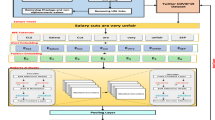Abstract
The aim is to clarify the evolution mechanism of Network Public Opinion (NPO) in public emergencies. This work makes up for the insufficient semantic understanding in NPO-oriented emotion analysis and tries to maintain social harmony and stability. The combination of the Edge Computing (EC) and Deep Learning (DL) model is applied to the NPO-oriented Emotion Recognition Model (ERM). Firstly, the NPO on public emergencies is introduced. Secondly, three types of NPO emergencies are selected as research cases. An emotional rule system is established based on the One-Class Classification (OCC) model as emotional standards. The word embedding representation method represents the preprocessed Weibo text data. Convolutional Neural Network (CNN) is used as the classifier. The NPO-oriented ERM is implemented on CNN and verified through comparative experiments after the CNN's hyperparameters are adjusted. The research results show that the text annotation of the NPO based on OCC emotion rules can obtain better recognition performance. Additionally, the recognition effect of the improved CNN is significantly higher than the Support Vector Machine (SVM) in traditional Machine Learning (ML). This work realizes the technological innovation of automatic emotion recognition of NPO groups and provides a basis for the relevant government agencies to handle the NPO in public emergencies scientifically.












Similar content being viewed by others
Explore related subjects
Discover the latest articles and news from researchers in related subjects, suggested using machine learning.References
Lin L, Jiang A, Zheng Y, et al. New media platform's understanding of Chinese social workers' anti-epidemic actions: an analysis of network public opinion based on COVID-19. Social Work in Public Health, 2021: 1–16.
Rim H, Lee Y, Yoo S (2020) Polarized public opinion responding to corporate social advocacy: social network analysis of boycotters and advocators. Public Relations Review 46(2):101869
Chintalapudi N, Battineni G, Amenta F (2021) Sentimental analysis of COVID-19 tweets using deep learning models. Infectious Disease Reports 13(2):329–339
Lee H, Noh EB, Choi SH et al (2020) Determining public opinion of the COVID-19 pandemic in South Korea and Japan: social network mining on twitter. Healthc Inform Res 26(4):335–343
Chen T, Li Q, Fu P et al (2020) Public opinion polarization by individual revenue from the social preference theory. Int J Environ Res Public Health 17(3):946
Li XW (2021) Quantitative research on the evolution stages of we-media network public opinion based on a logistic equation. Tehnički vjesnik 28(3):983–993
Jiang Y, Liang R, Zhang J et al (2021) Network public opinion detection during the coronavirus pandemic: a short-text relational topic model. ACM Transact Knowl Discov Data (TKDD) 16(3):1–27
Liu H, Yu Z, Zhong X et al (2021) Network public opinion monitoring system for agriculture products based on big data. Sci Program 2021:9976001
Wu P, Li X, Shen S et al (2020) Social media opinion summarization using emotion cognition and convolutional neural networks. Int J Inf Manage 51:101978
Jain PK, Pamula R, Srivastava G (2021) A systematic literature review on machine learning applications for consumer sentiment analysis using online reviews. Comput Sci Rev 41:100413
Peng LJ, Shao XG, Huang WM (2021) Research on the early-warning model of network public opinion of major emergencies. IEEE Access 9:44162–44172
Jain PK, Pamula R, Yekun EA (2022) A multi-label ensemble predicting model to service recommendation from social media contents. J Supercomput 78(4):5203–5220
Qiang Y, Tao X, Gou X et al (2022) Towards a bibliometric mapping of network public opinion studies. Information 13(1):17
Heppner S, Mohr NM, Carter KD et al (2021) HRSA’s evidence-based tele-emergency network grant program: Multi-site prospective cohort analysis across six rural emergency department telemedicine networks. PLoS ONE 16(1):e0243211
Wang Y, Peng S, Xu M (2021) Emergency logistics network design based on space–time resource configuration. Knowl-Based Syst 223:107041
An L, Hu J, Xu M et al (2021) Profiling the users of high influence on social media in the context of public events. J Database Manag (JDM) 32(2):36–49
Gaykema EW, Skryabin I, Prest J et al (2021) Assessing the viability of the ACT natural gas distribution network for reuse as a hydrogen distribution network. Int J Hydrogen Energy 46(23):12280–12289
Salmeron JL, Ruiz-Celma A (2021) Synthetic emotions for empathic building. Mathematics 9(7):701
Zhao B, Huang FY, Abramovitz A (2020) Derivation of OCC modulator for grid-tied single-stage buck-boost inverter operating in the discontinuous conduction mode. Energies 13(12):3168
Williamson MA, Dickson BG, Hooten MB et al (2021) Improving inferences about private land conservation by accounting for incomplete reporting. Conserv Biol 35(4):1174–1185
Cui T, Coleman A (2020) Investigating students’ attitudes, motives, participation and performance regarding out-of-class communication (occ) in a flipped classroom. Electron J e-Learn 18(6):550–561
Tiwari A, Sharma RM (2021) OCC: a hybrid multiprocessing computing service decision making using ontology system. Inter J Web-Based Learn Teach Technol (IJWLTT) 16(4):96–116
Acknowledgements
The authors acknowledge the help from the university colleagues.
Funding
This research was supported by the project of "Research on the dynamic evolution mechanism of NPO of public emergencies and the ability of local governments to cope with them" (Grant No.: 21wsk169) ( Wenzhou Philosophy and Social Science Planning in 2021).
Author information
Authors and Affiliations
Corresponding author
Ethics declarations
Conflict of interest
All Authors declare that they have no conflict of interest.
Ethical approval
This article does not contain any studies with human participants or animals performed by any of the authors.
Informed consent
Informed consent was obtained from all individual participants included in the study.
Additional information
Publisher's Note
Springer Nature remains neutral with regard to jurisdictional claims in published maps and institutional affiliations.
Rights and permissions
Springer Nature or its licensor holds exclusive rights to this article under a publishing agreement with the author(s) or other rightsholder(s); author self-archiving of the accepted manuscript version of this article is solely governed by the terms of such publishing agreement and applicable law.
About this article
Cite this article
Chen, M., Zhang, L. Application of edge computing combined with deep learning model in the dynamic evolution of network public opinion in emergencies. J Supercomput 79, 1526–1543 (2023). https://doi.org/10.1007/s11227-022-04733-8
Accepted:
Published:
Issue Date:
DOI: https://doi.org/10.1007/s11227-022-04733-8




